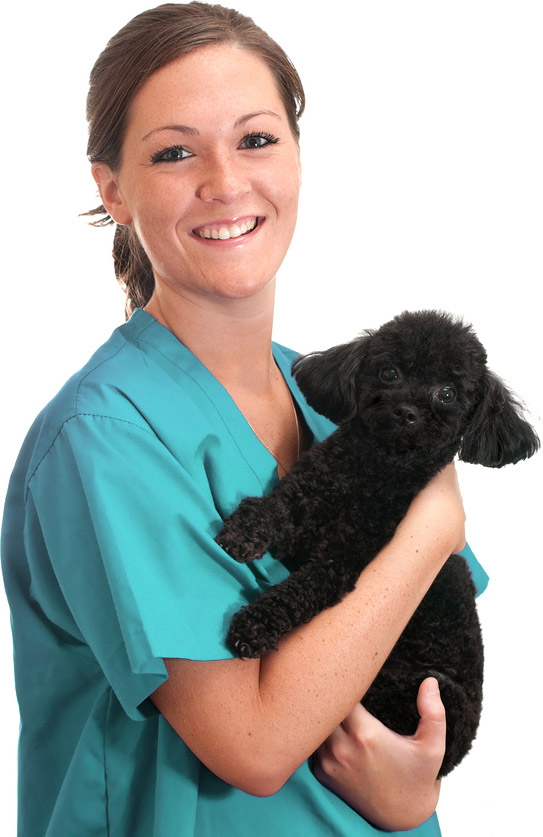student handbook
PREGNANCY
introduction

Veterinary Nursing, like many jobs, comes with hazards that can pose a risk to your health. Refer to our section on Personal Requirements & Safety for more information that applies to all workers. If you are pregnant, or considering pregnancy, the risk of harm occurring may increase.
Most workplaces are familiar with the risks and can accommodate alterations to duties to reduce your exposure. It is not necessary to stop working with animals if you are pregnant unless your medical doctor has advised you to.
Ensuring you work safely and wear the appropriate PPE at all times is absolutely necessary. You should ensure you inform your employer or clinical placement about your pregnancy as soon as you are aware of being pregnant. This enables them to help you work safely and provide a safe work environment.
We recommend that you speak with your personal doctor about your own health and that of your baby and discuss any work restrictions that may apply to you.
The following information is intended as a guide only and is not considered medical or legal advice. Please consult your medical team and your safe work authority for further information.
PREGNANCY & VETERINARY NURSING DUTIES
ANAESTHETIC GASES
Anaesthetic gases can cause spontaneous abortion in a pregnant woman as well as hepatic and neurological injury to the foetus. The following safety protocols should be followed in order to reduce risk;
- Ensure there are no leaking circuits and
scavenger systems are used correctly - Anaesthetic machines should be flushed through 3
times after use with oxygen by a non-pregnant member of staff - Pregnant women should not be involved in the
masking down of patients or within the vicinity - Pregnant women should not recover patients or
loiter areas where patients are recovering as patients will exhale gas for
hours after an anaesthetic - Pregnant women should not be re‐filling
anaesthetic machines or in the vicinity of someone doing it - Pregnant women should not be checking cuffs on
induction or during an anaesthetic - Pregnant women should only monitor an
anaesthetic once the cuff has been inflated and checked for a good seal. The
Isoflurane should not be turned on until this has occurred. - When transporting an animal which has been on
gas the pregnant woman should always be at the back end of the animal rather
than head end to avoid inhaling exhaled gas - Charcoal filtered mask should be worn if there
is a risk of inhaling anaesthetic gas or if the pregnant woman is particularly
concerned - Do not assist in procedures where the ET tube
will be taken out of the animal during procedure, eg tracheostomy, bulla series
x‐rays, airway exams etc
CHEMICALS
Chemicals should be avoided where possible. You may especially wish to avoid ones with strong odours.
Always refer to the Safety Data Sheet (SDS) for the product you are using to verify how to handle it safely and the Personal Protective Equipment (PPE) necessary.
Pregnant women should consider avoiding;
- Changing x‐ray chemicals
- Harsh cleaning products particularly aerosols
- Bone cement fumes.
DRUGS
Drug handling should be kept to a minimum. When handling unsealed drugs (eg not in blister pack or sealed container) pregnant women should always wear gloves.
Pregnant women in particular should avoid;
- Cytotoxic drugs as can cause birth defects in the baby
- Corticosteroids as can cause oral clefts and other malformations in the baby as well as spontaneous abortions
- Injectable drugs should be used with care, particularly S8’s and anaesthetics
ANIMAL HANDLING & MANUAL LIFTING
Pregnant women should follow the below safety protocols:
- Heavy lifting should be avoided and other lifting should be done with correct posture. The recommended weight restrictions for 3rd trimester are 2kg from the ground and 5kg from waist height.
- Cat handling and cleaning of litter trays should be avoided as toxoplasmosis can be transferred and cause spontaneous abortion. Toxoplasmosis is more prevalent in younger cats. Litter trays should be changed daily by non‐pregnant staff members.
- Struggling or dangerous animals should be avoided in case of being knocked or bitten.
- Chemotherapy patients and their bedding and excreta should be avoided. Leave cleaning of their cages to a non-pregnant member of staff.
RADIATION
Radiation should be avoided as radiation can cause birth defects and learning disabilities in babies. Pregnant women should not be exposed to more than 1mSv of radiation in an occupational setting, for the duration of the pregnancy (a chest x‐ray is 0.04mSv).
A good radiation safety protocol is that pregnant women should;
- Leave the room when x‐rays are being taken
- Avoid procedures where multiple x‐rays will be taken, eg: myelograms
